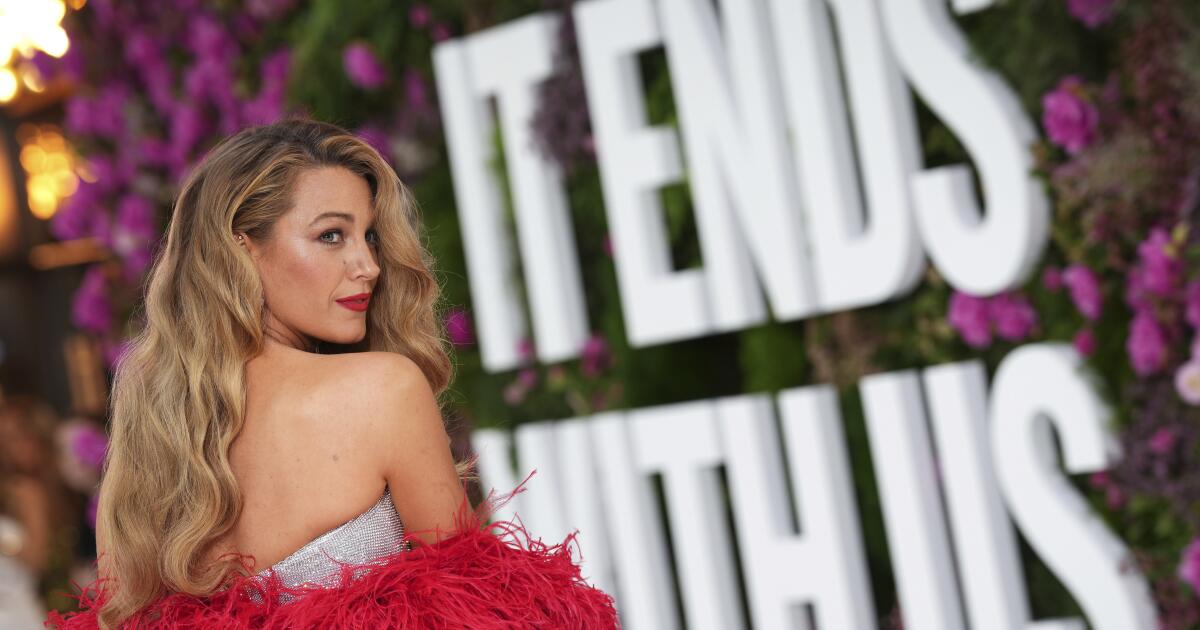Bright Sheng, a recipient of a MacArthur “genius” grant and one of the leading composers of our time, told an audience at a pre-show dinner at the University of Minnesota’s Campus Club Saturday night that he was dubious when approached more than a decade ago about composing an opera on “Dream of the Red Chamber,” one of the iconic novels of Chinese literature.
A sprawling five-volume work of the late 18th century by Cao Xueqin with 120 chapters and 400 characters chronicling the decline of an aristocratic family in imperial China, the novel had already inspired numerous films, two TV series and a handful of Chinese operas. But never before had the story made it onto the international operatic stage and never in English.
Like most Chinese and Chinese-Americans, Sheng had read the novel– several times in his case. The first as a teenager in his native Shanghai during the Cultural Revolution, when it was banned. He understood the scope of the task, and he asked the prolific playwright David Henry Hwang to collaborate with him on it. Together they had written a successful multi-cultural chamber opera, “The Silver River,” that premiered at the Santa Fe Chamber Music Festival. Hwang, too, thought the book too big to adapt. But then Sheng came up with the workable idea of paring the story down to its core, which he saw as a love story about a mythological Stone and Flower who come down to earth from heaven, where they are reincarnated as humans so they can experience and express their love. The outcome is wistful and sad.
“We tried to be faithful to the novel,” Sheng said. “But above all, I wanted it to be touching. My hope was that at least one person in the audience seeing this opera would cry.”
San Francisco Opera premiered the work in 2016, giving it a lavish production, taking it to Hong Kong and mainland China and then reviving it in San Francisco six years later, the first time this venerable company had ever revived one of its commissioned works. And now, this past weekend, “Dream of the Red Chamber,” in a new scaled-down version, was premiered at Ted Mann Concert Hall at the University of Minnesota, a collaboration by the university’s Opera Theater program and the Twin-Cities-based Chinese Heritage Foundation (CHF), which, going back to 2011, had provided the initial funding for what came to be called “the Dream project.”
“This is a work of profound artistic importance,” said Matthew Shilvock, managing director of San Francisco Opera, who had flown in the night before to see the production at Ted Mann. “This is a piece, with its blending of Eastern and Western cultures, that brought new audiences to San Francisco in a way that hadn’t happened before. And it’s amazing to see the work come full circle on its journey, moving from the Twin Cities to San Francisco, then to Hong Kong and Beijing and several other Chinese cities and finally back to Minneapolis.”
(Shilvock confirmed that his company will premiere next season an operatic version of another Chinese literary classic, “The Monkey King,” with music by Huang Ruo and libretto by one of the busiest dramatists working today, Henry David Hwang.)
“There was a need to present a smaller version of this opera, so we could bring the message to a wider audience,” said Pearl Lam Bergad, executive director of CHF and the core organizer behind the commissioning of “Dream of the Red Chamber.” She dedicated the Saturday night performance to Ming Li Tchou, a prominent leader of the Twin Cities Chinese community who passed away at the age of 100 on Nov. 1, a result of complications from a fall and stroke. In 2004, on the occasion of her eightieth birthday, Ming created the CHF with a mission to promote and perpetuate Chinese culture, history and arts through education and to encourage innovation in the arts.
“Ming was totally committed to producing this opera,” Bergad said. “She gave the initial money for the commission. She said to me, ‘I will see it through.”’
The goal of this new work, given four performances at Ted Mann this past weekend, was to create a scaled-down version of the opera suitable for universities and medium-sized opera companies, neither of whom would likely have the resources to mount so opulent a production as was seen in San Francisco, said to be budgeted at $5 million. (The 2022 revival probably cost more, given an increase in costs.)
How different was this chamber-opera version than the original? Changes to the actual score and the text were minimal, Sheng said. He made only a few cuts in the vocal lines and the orchestra parts. Two choral numbers, one at the start of the opera and another at the end, both sung by beggars, were cut.
Even so, for someone who saw both San Francisco productions, this new version, staged by David Walsh, and conducted so persuasively by Mark Russell Smith, seems like and certainly feels like a different show, even though it isn’t. Walsh and his capable creative team have made some bold and often clever choices – extensive use of projections, for instance (the careful work of John Marks), not just onto the stage but on the side walls of the hall itself, and an eye-filling set both spacious and intricately detailed, in the upper reaches of which is an ornate bridge that allows characters to arrive and exit as if to and from a great distance. John Lutz created the imaginative set. Tim Yup, the Oscar-winning designer of “Crouching Tiger, Hidden Dragon,” is named artistic consultant.

Usually, when a big production is re-imagined for use by schools and smaller companies, the result is rather plain and sparse – a reduction, in other words. This one, even though it is, according to reports, the most expensive the Opera Theater has ever presented, never looks like an effort in cost cutting.
Walsh’s basic set-up is unusual and works to everyone’s benefit. The orchestra sits onstage behind the set – we never really see Smith nor his excellent players – and the stage is extended out into the audience to accommodate what is surely the production’s chief innovation, the use of dancers, both as a substitute for chorus singers and as a way of expanding the emotional impact of the solo numbers. The result is immersive, offering a more intimate – and certainly more moving – experience of the story and the characters than was the case on the big stage in San Francisco, good as that production was.
Zhongmei Li, who came to the U.S in 1991 after several years as a principal dancer in her native China and now remains much in demand as a freelance choreographer, designed the show’s energizing, graceful and often dramatic dance numbers, fusing Chinese dance tradition with a modern dance sensibility, working with an ensemble of about a dozen dancers made up of students and local dancers as well as three virtuoso solo dancers brought here from New York City. Each of the three act as body doubles or avatars for one of the main characters: Johnson Guo, Xinyi Zhang and Miaotian Sun.
Those with long memories might recall a time when the University School of Music’s strength was thought to be the teaching of theory and composition and that in areas of performance it was weak, chiefly because the school didn’t have a decent concert hall. That changed, in 1993, when Ted Mann was dedicated. The voices heard onstage Saturday night, all of them from students, sounded like professionals, and these singers, thanks, one might suppose, to some magic wand that only Walsh operates, actually can act.
And this opera needs actors. The story is essentially a love triangle. When Stone and Flower come down to earth, Stone becomes Bao Yu (the fine lyric tenor Xi Yuan), spoiled heir to the wealthy Jia family, and Flower turns into Dai Yu (Jinglei Yao, a coloratura soprano), a sickly poetic young woman who comes to live with the Jias after the death of her mother. The two are seriously in love, but Bao Yu’s mother orders him to marry Bao Chai (mezzo Huiyin Tan), a beautiful heiress, to pay back the Jia family’s debut to the emperor.
The singers made these characters and their situations real. The shy Dai Yu sits alone in the second scene of act one playing her qin, an ancient plucked zither (the actual playing was by the gifted David Chang), singing a gentle song, floating delicate soft notes in her upper register, her spirit portrayed by Zhang’s ethereal dancing. She is soon joined by Bao Yu, and their duet becomes more passionate as they vow that together they “will prove that beauty can transform the world.”
Their ideals crumble into dust, as the story’s narrator, a Taoist Monk, had predicted. Bao Chai’s mother, Lady Wang, tricks Bao Yu into marrying the wrong person, Bao Chai, a more practical type who offers sage advice: “A woman’s only chance for happiness is to marry well.” Bao Dai burns the poems she had written to her beloved Bao Yu and drowns herself in a nearby lake.
Among the many accomplished singers were Ying Yang (Lady Wang), Xinyi Zhou (Princess Jia), Yun Kyong Lee (Granny Jia), Wendy Matsutani (Aunt Xue) and Yuran Liu (Imperial Messenger).

The amazing 87-year-old Chungliang Al Huang, philosopher, actor, dancer, calligrapher and author of many books, including the classic “Embrace Tiger, Return To Mountain,” which has been translated into 17 languages, played the Monk with a wry, jaunty air that suggested the kind of wisdom you might not want to take too seriously.
Finally, one of the pleasant surprises of this new version of “Dream of the Red Chamber” is how good the orchestra sounded Saturday night. Usually, when an orchestra plays onstage behind a big set, the result is a muffled sound. But Smith, who has served as director of the school’s orchestral studies since 2007, had his young musicians playing with agile intensity, delivering big, bright tones throughout the evening, making Sheng’s deft orchestration and deep lyricism sound inspired. (David Carrillo, James Chang and Leon Kobayashi were the assistant conductors.)
Surely Sheng’s wish came true Saturday. Not just one, but quite a few in the audience shed at least a tear or two as this story progressed to its sad conclusion.
Walsh and his people accomplished a great deal this weekend. Was there anything to complain about? Yes. Perhaps the Beggers’ choruses shouldn’t have been cut. They add something, a sense of social realism, of class consciousness that is worth considering even in a love story.








Leave a Reply